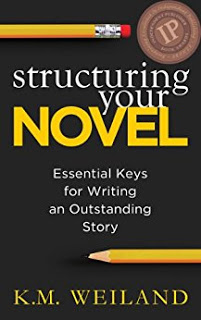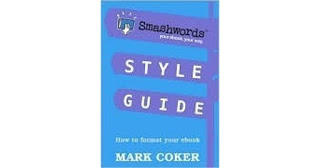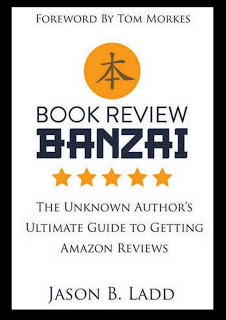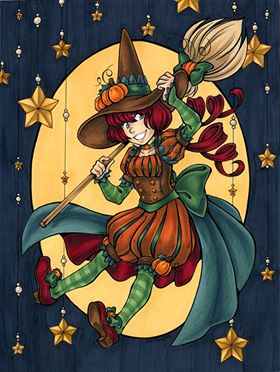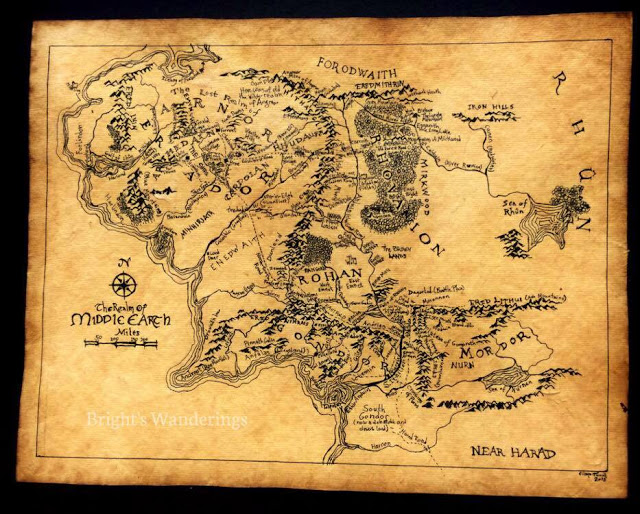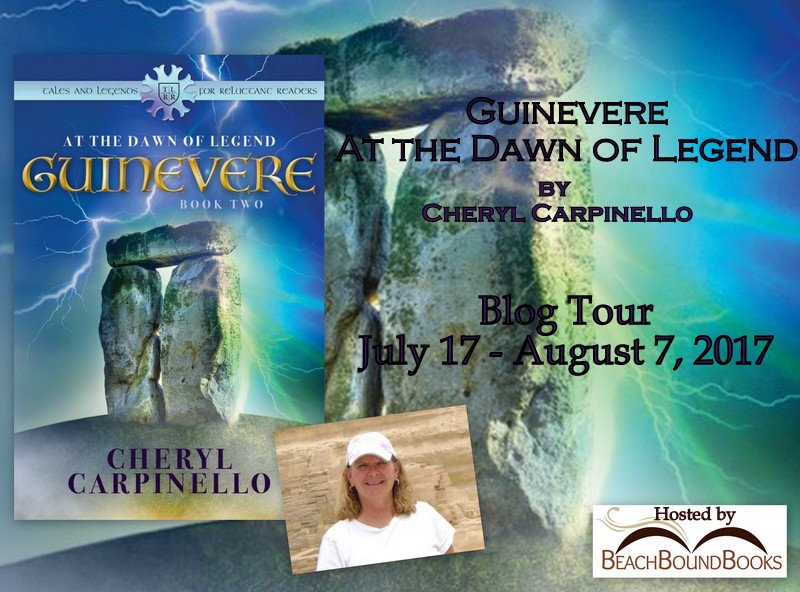1.) Banish those Assumptions
Maybe you already know how publication works and what being a published author is like. Or maybe you just think you do ….
Ten Things That Might Surprise an Unpublished Author
This little article by Denise Moncrief may burst your bubble. But it’s always better to know the truth so we can figure out how best to deal with the reality, right?
2.) Outline and Structure Your Novel
If you really have finished writing the book, this step probably won’t be necessary. But if you’re wondering if all your scenes are truly in the best order or whether the progression of your plot makes sense, here are a few helpful links you’ll want to check out. (Or bookmark them for when you’re ready to start planning the sequel!)
A Quick-Start Guide to Story Structure Methods
Janeen Ippolito lists and explains a number of different ways to outline a story’s structure. She includes diagrams and links to books that go into more detail about the different methods.
6 Ways to Outline Your Novel Faster
K.M. Weiland presents six quick suggestions for story outlining. Unlike the ones in Ippolito’s list, they aren’t really complete methods as such. They’re more like possible angles of approach.
Personally, I can highly recommend two books about plot outlining that I now use with every novel I write. Clicking on the pictures below will take you to the Amazon pages where you can find out more about the books and order them if you’d like to. I promise, they’re worth it!
3.) Choose a Title
Perhaps you already have a title for your book. But if you haven’t decided on one yet, here are some suggestions to consider.
How to Choose a Book Title That’s Perfect for Your Story AND Good Marketing!
K.M. Weiland explains why the right title matters so much and puts forth three ways to pick a good one.
How to Choose the Right Book Title
Anne R. Allen presents three different ways to choose the right title. (She also has an interesting list of famous books and their little-known original titles.)
20 Book-Title Hacks for Any Genre
David H. Safford suggests a whopping twenty different ways to come up with a good book title: everything from making it a story symbol to using a famous quotation.
3 Book Title Mistakes that will Murder Your Marketing Efforts
Using the right or wrong kind of title can have a big impact on how many people buy your book. Dave Durden explains how.
4.) Start Building a Platform
An author platform is important for anyone who wants to sell books to more than just their personal friends and family. Even if your book isn’t ready for publication yet, it’s never too early to start building your platform through your website/blog, on social media, etc.
Building an Online Presence: Websites, Blogs, and Social Media for Authors
This is a collection of information about starting a website or a blog, along with different types of social media (Facebook, Twitter, Pinterest, Instagram, Google+, Tumblr, YouTube, and LinkedIn) and how authors can use each one. There’s even a link to an article about what to do if you don’t have (or want) a social media presence at all.
5.) Join an Author Group
I cannot overemphasize how much this will help you. If you don’t have a physical group of local authors to be a part of (or even if you do), find an online one (or two, or three, or four …). Try searching Facebook for “authors” or “author group _____” (your genre). If you end up in a group without much interaction, or where people spend most of their time just advertising their books to each other, find a new group. Joining some excellent Facebook author groups has helped me more than anything else as an author. They are a great place to share ideas, ask questions, and support each other in our journeys as writers. You can also ask around in author groups for beta readers, editors, cover artists, etc.
The following groups may or may not be a fit for you and your books, but here are a few that I have personally found helpful. Below each one, I’ve included excerpts from the group’s description on Facebook. If nothing else, they’ll show you some examples of what’s out there.
Clean Indie Reads
Finally! A book / author group that isn’t just a post-and-run! We are here to offer real, useful support. Welcome to the workplace that feels like home.
CIR is a group for INDIE AUTHORS of FLINCH-FREE FICTION (no explicit sex or violence and limited swearing). We’re here to support each other in the whole process of writing/publishing/marketing quality indie books.
Use this Google spreadsheet of service options to see if we’re a good venue for you. http://bit.ly/IsCIR4U
Iron Sharpening Iron
Before requesting to join, please be aware we have three requirements for joining, which you will be asked to affirm:1) That you are a Bible-believing Christian2) That you are (or are working to become) a Christian Author, or are an enthusiastic fan and reader, in the Speculative Fiction genre3) That you are willing to try and be an ACTIVE member.
This is a CHRISTIAN group run by biblical principles. The idea behind the group: Proverbs 27:17 “Iron sharpens iron, So one man sharpens another.” It is not by placation and empty praise that we learn and grow, but it is by godly brothers and sisters, practicing “truth in love” that we can learn and grow together to improve our collective witness for Christ in the literary world. May the Lord bless you all in your work.
Christian Indie Authors
Christian writers with works not openly Christian are welcome! Please alert us to language, sex, or violence when sharing or asking for a review. Liberty in Christ can give different standards. Share what you can.
Please don’t post and run. Take a moment; offer assistance to a fellow Indie. Share a book; answer a question. We are a family.
To share blogs etc you must be an active member. What is active? It’s talking. It’s taking a few seconds to share a post. It’s being a part of our family. Not everyone is going to post. We have members who just read.
Christian Indie Authors Tweet Exchange
This might be helpful, too:
60+ Facebook Groups for Authors – Promote Your Books, Blogs, and More
Shelley Hitz lists groups of readers, groups of writers, groups specifically for sharing discounted books, etc.
6.) Enlist Beta Readers
Beta readers are people who read through your book before it is published for the purpose of giving constructive feedback.
All About Beta Readers: 7 Ways They Can Improve Your Book
In this thorough article, Anne R. Allen talks all about why beta readers are necessary, where to find them, what kinds of people are likely to make good beta readers, etc.
Revise It! Recruiting and Using Reader Feedback
Janeen Ippolito lists different types of readers, along with suggestions for recruiting the most helpful ones and utilizing their feedback.
What to Ask Your Beta Reader
It’s helpful to give beta readers questions to answer as they read your manuscript. Author Valerie Comer has a great list of questions. You’ll want to add to them with specific questions about your own story and characters.
5 Steps to a Thorough Book Edit
Once you hear back from your beta readers, try implementing Liberty Spiedel’s suggestions for how to utilize their feedback.
7.) Edit and Proofread
There’s way too much to say about these essential steps to put it all here.
Editing and Proofreading: DIY Tips and Professional Resources
This blog post is a compilation of the best editing and proofreading advice I’ve found, along with links to some professional editors’ and proofreaders’ sites. DO NOT EVEN THINK OF SKIPPING THESE STEPS! No matter how good a writer you are, your manuscript still needs to be edited and proofread.
8.) Decide if You Want Illustrations
I don’t mean a cover picture (we’ll “cover” that separately, pun intended). Not all books need inside art, but if you’re writing certain genres (like children’s fiction or some types of nonfiction), you’ll probably want some. Many authors also like to have pictures of their characters to use in blog posts and promotional materials, even if they don’t end up in the book itself.
Awesome Illustrators: A Collection of Artistic Resources for Authors
Here’s a list of some illustrators who have been personally recommended by authors I know. You can see some samples of their artwork under their names, along with links to their websites. Of course, a web search with your specific genre will turn up many more.
9.) Decide Whether Your Book Needs a Map
Most books don’t. But if you’re writing historical fiction, fantasy, or science fiction, it might be helpful (and fun) to include one at the beginning. Several of the illustrators at the link above also do maps. If you prefer to make your own, check out the links below.
Fantasy MapMaking Tutorial
In this video, Jessica Khoury shows how to make your own map. It’s part 1 of 5, so don’t forget to go on to her other 4 videos when you’re done.
10 Rules for Making Better Fantasy Maps
Lauren Davis has some great points that you should keep in mind before you start.
10.) Create a Cover (or Hire a Cover Artist)
Obviously, every published book (ebook or paperback) needs a cover.
The Perfect Cover for Your Book
In this blog post, I include links to dozens of helpful resources about cover design. Whether you plan to make your own cover or hire a professional, you should be certain you know these basic principles. Do you have an artistic friend you hope will help you out? Don’t assume they’ll be awesome at making book covers just because they’re an awesome artist. Pass on this info to them to make sure they know what’s expected in book cover design. I’ve also included a list of professional cover artists and the websites where you can check out their services and contact them.
11.) Decide How to Publish Your Book
Do you plan to self-publish, or do you hope to have your book traditionally published by a major publishing company or small press? Warning: for a new author, landing a contract with a major publisher is almost impossible. Getting a small press interested is a little more likely but can still be quite difficult. Self-publishing is easy, as long as you’re willing to put in the work.
Self-Publishing vs. Traditional Publishing: Which is Better?
This article by Gary Smailes is long but well worth the read. Basically, it tells everything you need to know about how both options work, including their pros and cons. It also talks about agents. I highly recommend reading it before you make your choice.
Whatever you do, DON’T fall prey to a “vanity press” promising to publish your book for you! These are organizations that charge unsuspecting newbie authors huge amounts of money – often thousands or even tens of thousands of dollars – and in return may provide them with an ebook and hundreds or thousands of paperback copies that the author is usually responsible for selling. Most authors only make a fraction of their money back and end up with a basement full of unsold books gradually yellowing with age. If in doubt about whether a publishing company is reputable or not, it’s a good rule of thumb not ever to go with anyone who makes you pay upfront for their “services”. Reputable publishers make their money by taking a percentage of what you make in sales after the book is published, not by charging you for their work.
Beware of Sharks in Publisher’s Clothing
Judith Briles explains how to spot and avoid such publishing predators.
12.) Write a Blurb
You will need a blurb to go on the back cover of your book. Even if you only plan to publish an ebook, the blurb is the description that will go on Amazon or other retailers. Don’t make the mistake of thinking that a blurb is simply a summary of the story – there’s much more (and in some ways, much less) to it than that!
How to Write a Book Blurb (and a Synopsis, Logline, and Tagline)
In this blog post, I’ve compiled a list of resources for blurb writing. You’ll need to have your blurb ready before you go on to the next two steps, so these should be helpful.
13.) Format and Publish Your Book as an eBook
There are a number of platforms out there for publishing ebooks. To start with, you’ll definitely want to make your book available on Amazon, since it’s the biggest by far. (However, I suggest not actually completing the publishing process until you’ve considered the “wide vs. narrow” issue discussed a couple of links down in this list.)
How to Prepare Your Manuscript for Sale on Kindle without Hyperventilating
Hey, it can be a stressful process! When I was new to indie publishing, I couldn’t find a single list of all the steps to take for formatting an ebook. I had to scour the web for each step, and it wasn’t easy! So I combined everything I eventually figured out into one list, which I still refer to every time I publish a new book. I hope it’s as helpful to you as it is to me.
Wide vs… Narrow?
Amazon offers various incentives to authors who agree to make their books exclusively available on its site. Choosing to also sell one’s books elsewhere (such as such as through Barnes&Noble, Kobo, Google Play, or Apple iBooks) is known as “going wide”. In this article, J Philip Horne discusses the pros and cons of each choice, along with more information about what’s involved.
Distributing Your Books
You can go wide by distributing your book individually to each retailer, or you can upload them to a distributor that will send them everywhere for you and consolidate your earnings. Here, J Philip Horne talks about the pros and cons of both methods.
Smashwords vs. Draft2Digital
Smashwords and Draft2Digital are the two biggest ebook distributors. Dave Chesson compares them with a handy chart and links
Aggregation without Aggravation: Pronoun and PublishDrive
Pronoun and PublishDrive are two more major ebook distributors. David Kudler compares them here and also includes links to both sites.
Smashwords has a short ebook that you can download for free with information about how to format your manuscript before uploading it to their site for distribution. Clicking on the picture below will take you to the book’s Amazon page.
Depending on where you want to upload and sell your ebook, you may first have to save the file as a mobi or an epub.
Calibre
To save your file as a mobi (needed for publishing as a Kindle book) or an epub (needed for publishing on most other platforms), I recommend using Calibre. Simply click on the link above and download the program (for free). You’ll need to save your Word doc as a PDF first, then use Calibre to change it to a mobi or epub. There are places online to convert documents similarly, but some of them mess up the formatting, title, etc. Calibre is reliable and highly recommended by many professionals.
14.) Format and Publish Your Book as a Paperback
There are several POD (print on demand) companies out there that are easy for authors to use, but you’ll want to pick just one. KDP Print and Ingram Spark are the main ones. (Again, I suggest not actually completing the publishing process until you’ve considered item #13 on this list.)
DIY: Print on Demand 101
Daniel Lefferts and Alex Daniel talk about 6 POD companies and the differences between them.
How to Prepare Your Manuscript for Paperback Publication through KDP Print
My personal experience is with KDP Print (formerly CreateSpace). In this blog post, I offer step-by-step instructions for how to format your manuscript to make a professional-looking paperback, and then how to upload and publish it through the KDP website.
15.) Plan Your Book Launch
Sending a new book out there into the world is a big deal! But don’t plan on just clicking the final “publish” button and sit back waiting for the sales to roll in. Unfortunately, it doesn’t work that way. You have to put the word out about your book, and ideally, that process should start before the book is published.
You should try to get people to review your book as soon as possible after it’s available for purchase (the day of, if possible). To do this, you will need to contact possible reviewers beforehand and offer them a free (yes, free!) copy of your book in exchange for an honest review. (I recommend offering digital copies only if you’re on a tight budget, but be aware that some reviewers will only accept paperbacks.) Asking around in your author groups often works, but for long lists of book bloggers, check out these two links (of course, make sure you only contact reviewers who have expressed an interest in your genre):
The Book Blogger List
The Indie Reviewers List
5 Steps for Crafting the Perfect Book Review Pitch
In this article “BookGal” has some great tips for actually contacting reviewers.
Book Review Banzai
Jason B. Ladd offers an entire course on how to get far more book reviews than you would get just by contacting reviewers the normal way. I’ve taken the course myself, and I can recommend it. Or, if you don’t have a lot of time on your hands, you could just read his book by the same title and apply the principles he explains. (Clicking on the picture below will take you to the Amazon page where you can read more about the book or purchase it.)
Creative Book Launches that Command Attention
In this article, author Angela Ackerman suggests a number of fun approaches and strategies to launching a book in a way that will attract attention and generate sales.
Ten Tips to Have a Successful Book Release Party on Facebook
Many authors use Facebook to hold fun events on their book’s release day. Victoria Holt gives a clear and succinct list for how to make that work, and work well.
Marketing Your Book with Press Releases
Another book launch strategy some authors use is to send press releases to newspapers and other publications. Connie Dunn explains how it works, where to find periodicals’ contact information, and how to compose a good press release.
How I Put Together My Great Big Blog Tour and Giveaway
Personally, I like setting up blog tours for my new books. This method works best if you already have connections with bloggers who write about book-related topics. If you have joined any author groups, as suggested in step 5 above, some of your fellow authors will probably be willing to host your book. In this post, I explain the method I used to put together one particular blog tour, which I combined with a giveaway to attract more interest.
How to Create a Global URL for Your Book
When you start sending your book’s Amazon link to newspapers, reviewers, potential buyers, etc., there’s an important point to consider. Amazon has different stores for different countries. When you make your book available on Amazon, it will automatically show up in Amazon’s online store in Italy, Japan, Australia, and Brazil (to name a few), along with the one in America. But your book’s page in each of those stores requires a different link. So if you’re in the US and you give your link to someone in, say, Canada; and if that person clicks on it to take a look at your book, they will see an error message that tells them to log into the Amazon Canada site instead of the Amazon US site. But once they log in, they will no longer be on the page where they can see your book. Of course they can still find it by searching, but not everyone will bother to do that, and you may lose sales to international readers. To solve the problem, you can create a “global URL” that will take anyone who clicks on it to your book’s page in the Amazon store that matches their geographical location. I have included screenshots with these step-by-step instructions to show you how to do that.
16.) Celebrate! But Keep Marketing
If you’ve made it through this list (or even most of it), congratulations! That’s an amazing accomplishment! You have brought a book into the world and worked hard to achieve a goal that to many people is only a distant dream. Now go out and treat yourself to something special. You deserve it!
But … don’t rest on your laurels. In order to get consistent sales, you will need to continue marketing your book indefinitely. Make a plan and keep following it!
71 Ways to Promote and Market Your Book
Kimberley Grabas has a great list here. Many of her suggestions don’t cost anything.
Author Marketing Checklist
The Author Marketing Club has a great list of things you can try. Some of them are ones I’ve already mentioned in this post, but there are plenty of new ones. Best of all, each item on their list comes with a little video that shows you how to do it.
The Ultimate Guide to Book Marketing
Diana Urban has a very thorough list here. Like this blog post, it’s made up mainly of links to helpful articles and resources. Hers are divided into categories like “before you publish”, “after the book launch”, etc. Again, some of them have been covered here, but not all.
Wooing Book Buyers to Get Your Book Into Stores
Want to see your paperback for sale in actual brick-and-mortar bookstores? Amy Collins explains how to make it happen.
Working with Bookstores
Once your book is in a brick-and-mortar bookstore, how do you get customers to notice it and buy it? Amy Collins offers some great suggestions.
Free Promo Sites for 99 Cent Books
One of the best ways to get potential buyers to notice your ebook is to temporarily discount it (or even to make it free for a few days at a time). You can do this on your KDP Bookshelf. But you’ll want to make sure to advertise your discounted or free book to some of the sites that alert readers of good deals. In this post, I list (to the best of my knowledge) every single book promo site out there that will promote your discounted ebook at no cost to you. I have created three more posts with similar lists for free books and for sites that charge for their services; you’ll find them at the top when you click on the link. (I update the lists often, so keep checking back!)
I wish you all the best in your journey as an author!
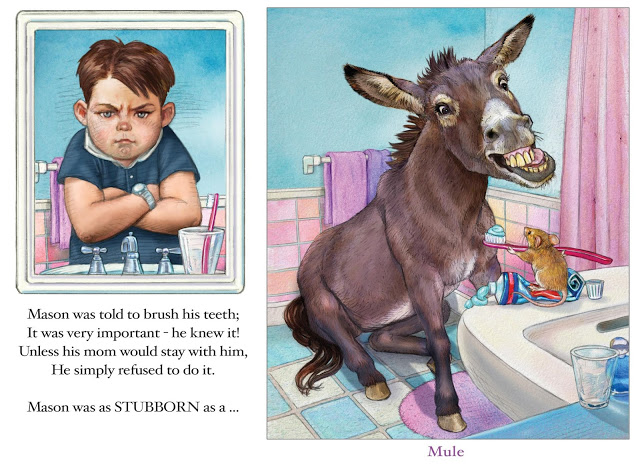 |
| from As Proud as a Peacock … a book of similes by Michael Adams |
“I consider it my job to make ideas come to life. So I generally blend several different mediums to make sure the author’s project comes out perfectly. A lot of my work is done as a mix of watercolor and digital painting…that might be anything from a book cover, to a fantasy map as an interior illustration. Nothing is out of the question!”
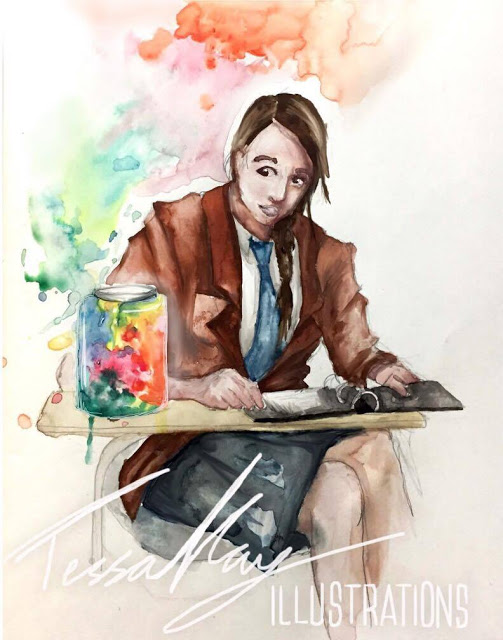 |
| “Lack of Focus” by TessaKay |
 |
| a sampling of Raw Spoon’s work in book illustrations, band posters, and other pieces |
 |
| The World of Edyn from “Mythborn: Fate of the Sovereign” (Book 1 of the Mythborn Saga) by Vijay Lakshman |
 |
| An illustration from “Mommies and babies” illustration series |
 |
| “Jenny”, illustration for K.M. Weiland’s Storming |
 |
| Mikey Brooks Brings Life to Words with Art |
 |
| From Archibald and the Giant Philistine by Laura J. Marshall, created by Mary C. Findley with textures and images in PhotoImpact |
Karmada Arts
“A manga-styled (Japanese comics) artist, who specializes in traditional materials such as pencil, ink, and art markers. Also versed in watercolors as well as some digital art, and often is found working on comic projects or illustrative works.”
“I love to create complete and polished maps for people. You can send in the rough sketch for your book, or any place you’re fond of, and I will turn it into a detailed piece of art. Materials: Pen and white paper for a digital copy and/or I can create a hard copy to send to you (for which I use thick paper I dye with coffee and tea).”
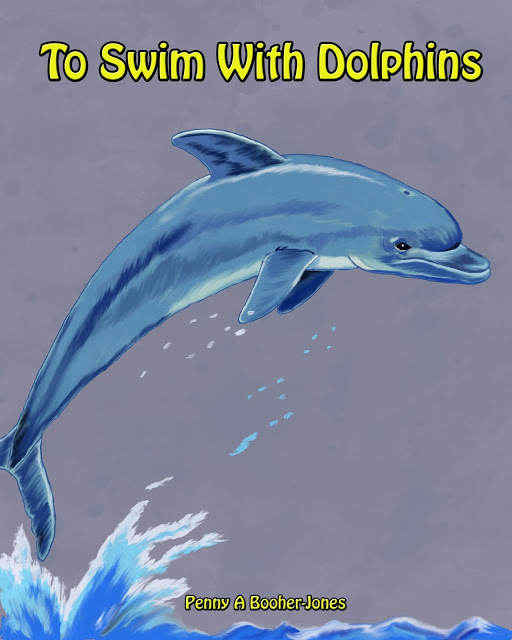 |
| cover for To Swim with Dolphins |
Mythspinner Studios
“I’m a fan of science fiction, space opera, dystopian fiction, fantasy (light and dark), steampunk, dieselpunk, atompunk, cozy mysteries, well-written ghost-stories, and all things mythological. My eclectic tastes reflect not only in my work but play a role in deciding what commissions I take.”
 |
| Cold Night on the Mountain |
 |
| Photo by Ilya Pavlov on Unsplash |
So you’ve written a book, and you’re asking yourself, “Do I really need an editor? I’m pretty good at writing, after all. I caught a few mistakes as I went through, and I don’t think there are any more. Maybe I should just save money and publish the book as is.”
Yikes!
Sorry to burst your bubble, but, to put it bluntly, you’re wrong. We ALL need editors! That is, certainly you can and should go through your own manuscript and search for errors. But as authors, we’re just too close to our own stories to catch everything. Trust me! It doesn’t matter if you’ve earned an “A” on every English assignment through elementary, middle school, high school, and college. It doesn’t matter if you’re a full-time writer or an English professor. NOBODY gets it all right all of the time, and that’s why professional proofreaders and editors are absolutely essential for authors.
First, some definitions. There’s more than one type of editing, after all
What’s the Difference between Line, Copy, and Content Editing?
I recommend taking a look at the article at this link. Pavarti K. Tyler explains what each kind involves and why your manuscript needs them.
At the end of this post, I’ve compiled a list of professionals you can contact for your editing and proofreading needs. In the meantime, let’s go over some tips for improving your own writing as much as you can. The more problems you find and fix, the less your editor will have to do, which will probably make the editing process cheaper, quicker, and simpler.
The following posts and articles are ones that I’ve collected from all over the internet and can highly recommend for their useful content. I recommend checking them out, bookmarking them, and referring back often throughout your writing and editing process.
19 Best Titles for Self-Editing
Corina Koch MacLeod and Carla Douglas have compiled a list of helpful books that would make great additions to your library. Best of all, they’ve organized them in categories according to the level of writing they are intended to help with: big picture, paragraph level, sentence level, word level, and some designed to provide inspiration for writers.
100 Editing and Proofreading Tips for Writers
Duncan Koerber has a lot of useful ideas here, including some on how to even approach the whole process.
These are big-picture tips relating to story structure, conflict, character motivation, etc.
Do you have too many details in your descriptions? Not enough? Jill Williamson will help you see what to do about either problem.
Hunting Down Story Holes Using a Novel Journal
David Stafford has a unique idea for how to keep track of seasons, location layout, character traits, etc. You don’t want to be inconsistent in your story!
How to Strengthen the Theme of Your Book During Edits
Does your book have a theme? Should it? Did you mean to give it one but not start thinking about it until halfway through your first draft? Stephanie Morrill will help you fix that in the editing stage.
Susan Uhlig has some helpful suggestions, many of which deal with the big picture of your story as opposed to tiny details.
How to Write Well: 10 Essential Self-Editing Tips
C.S. Lakin has some great tips for punctuation, grammar, and a few other issues. Each one is quick to read and easy to understand, but you’ll want to go back through your manuscript slowly and carefully to check that you’re applying them as well as you can.
We all have words and phrases we tend to use too often without realizing it. Sporkforge will tell you what they are, along with a number of other nifty functions.
20 Common Grammar Mistakes That (Almost) Everyone Makes
In this article, Jon Gingerich lists some common errors, especially between pairs of words that are commonly mixed up (like “continually” vs “continuously”). Better yet, he explains why the right one is the right one for each certain context. It would be a good idea to read through the list, and if anything there surprises you, search for that word in your manuscript and make sure you’ve used it correctly.
Grammar Girl’s Editing Checklist
Another great list of types of mistakes to look for in your writing. You may even want to print this one out and keep it by your computer for reference.
ProWritingAid Review: Is It Worth It?
ProWritingAid is similar to Grammarly, but many authors and editors feel it’s better. Check out this review by Kindlepreneur’s Dave Chesson, whose valuable insights into many aspects of writing, editing, and publishing have helped me a lot in my own self-publishing journey. You might find that ProWritingAid is just what you need to take your own editing to the next level.
So, what happens after you’ve done everything you can to edit your own manuscript? Time to turn to the professionals.
Choosing the Right Book Editor
How do you know which editor will work best for you? ChatEBooks has some great suggestions. After you read them, scroll down and browse the list of editors, and check out some of their websites to see what services they offer and who might be right for you.
5 Questions Every Indie Author Must Ask Before Hiring an Editor
Once you’ve found a few editors who look like a good fit for your book, A. Denefield Jones has some good suggestions about things to ask them before you sign a contract.
And now for the list! Without further ado, here are way more editors than anyone would ever need. 🙂 Just click on their names to visit their websites. (Disclaimer: yes, the first name there is mine. 🙂 I mainly do line editing, but you can check out a full description of my services at the link.)
Stephanie Aspasia Marshall Ward
Do you know any other editors you’d like to recommend? Can you think of some great self-editing tips not mentioned here? Feel free to tell us in the comments!
Author’s name:
 Is there any advanced or unusual technology in Aslaria? If you haven’t described it already, please give some examples.
Is there any advanced or unusual technology in Aslaria? If you haven’t described it already, please give some examples. Hope Ann is a speculative fiction writer who lives on a small farm in northern Indiana. She has self-published three Legend of Light novellas and writes regular articles for Kingdom Pen as the Writing Team Captain. Reading since the age of five, and introducing herself to writing at age eight, she never had a question that the author’s life was the life for her. Her goal is to write thrilling Christian fantasy and futuristic fiction — stories she longed for while growing up. After graduating from homeschool, Hope now teaches writing to several of her eight younger siblings. She loves climbing trees, archery, photography, Lord of the Rings, chocolate, and collecting shiny things she claims are useful for story inspiration.
Hope Ann is a speculative fiction writer who lives on a small farm in northern Indiana. She has self-published three Legend of Light novellas and writes regular articles for Kingdom Pen as the Writing Team Captain. Reading since the age of five, and introducing herself to writing at age eight, she never had a question that the author’s life was the life for her. Her goal is to write thrilling Christian fantasy and futuristic fiction — stories she longed for while growing up. After graduating from homeschool, Hope now teaches writing to several of her eight younger siblings. She loves climbing trees, archery, photography, Lord of the Rings, chocolate, and collecting shiny things she claims are useful for story inspiration. Click here to read other posts in the Realm Explorers series.
Please join us again next Monday for a trip to another world in next week’s edition of Realm Explorers!
<!– /* Font Definitions */ @font-face {font-family:"Cambria Math"; panose-1:2 4 5 3 5 4 6 3 2 4; mso-font-charset:0; mso-generic-font-family:auto; mso-font-pitch:variable; mso-font-signature:-536870145 1107305727 0 0 415 0;} @font-face {font-family:Calibri; panose-1:2 15 5 2 2 2 4 3 2 4; mso-font-charset:0; mso-generic-font-family:auto; mso-font-pitch:variable; mso-font-signature:-520092929 1073786111 9 0 415 0;} /* Style Definitions */ p.MsoNormal, li.MsoNormal, div.MsoNormal {mso-style-unhide:no; mso-style-qformat:yes; mso-style-parent:""; margin:0in; margin-bottom:.0001pt; mso-pagination:widow-orphan; font-size:12.0pt; font-family:"Times New Roman"; mso-fareast-font-family:"Times New Roman";} p.MsoFooter, li.MsoFooter, div.MsoFooter {mso-style-unhide:no; mso-style-link:"Footer Char"; margin:0in; margin-bottom:.0001pt; mso-pagination:widow-orphan; tab-stops:center 3.0in right 6.0in; font-size:12.0pt; font-family:"Times New Roman"; mso-fareast-font-family:"Times New Roman";} span.MsoPageNumber {mso-style-unhide:no; mso-ansi-font-size:12.0pt; font-family:"Times New Roman"; mso-ascii-font-family:"Times New Roman"; mso-hansi-font-family:"Times New Roman";} a:link, span.MsoHyperlink {mso-style-priority:99; mso-style-parent:""; color:blue; text-decoration:underline; text-underline:single;} a:visited, span.MsoHyperlinkFollowed {mso-style-noshow:yes; mso-style-priority:99; color:#954F72; mso-themecolor:followedhyperlink; text-decoration:underline; text-underline:single;} p.MsoListParagraph, li.MsoListParagraph, div.MsoListParagraph {mso-style-priority:34; mso-style-unhide:no; mso-style-qformat:yes; margin-top:0in; margin-right:0in; margin-bottom:0in; margin-left:.5in; margin-bottom:.0001pt; mso-add-space:auto; mso-pagination:widow-orphan; font-size:12.0pt; font-family:"Times New Roman"; mso-fareast-font-family:"Times New Roman";} p.MsoListParagraphCxSpFirst, li.MsoListParagraphCxSpFirst, div.MsoListParagraphCxSpFirst {mso-style-priority:34; mso-style-unhide:no; mso-style-qformat:yes; mso-style-type:export-only; margin-top:0in; margin-right:0in; margin-bottom:0in; margin-left:.5in; margin-bottom:.0001pt; mso-add-space:auto; mso-pagination:widow-orphan; font-size:12.0pt; font-family:"Times New Roman"; mso-fareast-font-family:"Times New Roman";} p.MsoListParagraphCxSpMiddle, li.MsoListParagraphCxSpMiddle, div.MsoListParagraphCxSpMiddle {mso-style-priority:34; mso-style-unhide:no; mso-style-qformat:yes; mso-style-type:export-only; margin-top:0in; margin-right:0in; margin-bottom:0in; margin-left:.5in; margin-bottom:.0001pt; mso-add-space:auto; mso-pagination:widow-orphan; font-size:12.0pt; font-family:"Times New Roman"; mso-fareast-font-family:"Times New Roman";} p.MsoListParagraphCxSpLast, li.MsoListParagraphCxSpLast, div.MsoListParagraphCxSpLast {mso-style-priority:34; mso-style-unhide:no; mso-style-qformat:yes; mso-style-type:export-only; margin-top:0in; margin-right:0in; margin-bottom:0in; margin-left:.5in; margin-bottom:.0001pt; mso-add-space:auto; mso-pagination:widow-orphan; font-size:12.0pt; font-family:"Times New Roman"; mso-fareast-font-family:"Times New Roman";} span.FooterChar {mso-style-name:"Footer Char"; mso-style-unhide:no; mso-style-locked:yes; mso-style-link:Footer; mso-ansi-font-size:12.0pt; mso-bidi-font-size:12.0pt; font-family:"Times New Roman"; mso-ascii-font-family:"Times New Roman"; mso-fareast-font-family:"Times New Roman"; mso-hansi-font-family:"Times New Roman"; mso-bidi-font-family:"Times New Roman";} .MsoChpDefault {mso-style-type:export-only; mso-default-props:yes; font-size:11.0pt; mso-ansi-font-size:11.0pt; mso-bidi-font-size:11.0pt; font-family:Calibri; mso-ascii-font-family:Calibri; mso-ascii-theme-font:minor-latin; mso-fareast-font-family:Calibri; mso-fareast-theme-font:minor-latin; mso-hansi-font-family:Calibri; mso-hansi-theme-font:minor-latin; mso-bidi-font-family:"Times New Roman"; mso-bidi-theme-font:minor-bidi;} .MsoPapDefault {mso-style-type:export-only; margin-bottom:8.0pt; line-height:107%;} @page WordSection1 {size:595.45pt 841.7pt; margin:.8in .8in .8in .8in; mso-header-margin:53.85pt; mso-footer-margin:.5in; mso-paper-source:0;} div.WordSection1 {page:WordSection1;} /* List Definitions */ @list l0 {mso-list-id:1112239410; mso-list-type:hybrid; mso-list-template-ids:-1653819976 67698703 67698713 67698715 67698703 67698713 67698715 67698703 67698713 67698715;} @list l0:level1 {mso-level-tab-stop:none; mso-level-number-position:left; text-indent:-.25in;} @list l0:level2 {mso-level-number-format:alpha-lower; mso-level-tab-stop:none; mso-level-number-position:left; text-indent:-.25in;} @list l0:level3 {mso-level-number-format:roman-lower; mso-level-tab-stop:none; mso-level-number-position:right; text-indent:-9.0pt;} @list l0:level4 {mso-level-tab-stop:none; mso-level-number-position:left; text-indent:-.25in;} @list l0:level5 {mso-level-number-format:alpha-lower; mso-level-tab-stop:none; mso-level-number-position:left; text-indent:-.25in;} @list l0:level6 {mso-level-number-format:roman-lower; mso-level-tab-stop:none; mso-level-number-position:right; text-indent:-9.0pt;} @list l0:level7 {mso-level-tab-stop:none; mso-level-number-position:left; text-indent:-.25in;} @list l0:level8 {mso-level-number-format:alpha-lower; mso-level-tab-stop:none; mso-level-number-position:left; text-indent:-.25in;} @list l0:level9 {mso-level-number-format:roman-lower; mso-level-tab-stop:none; mso-level-number-position:right; text-indent:-9.0pt;} ol {margin-bottom:0in;} ul {margin-bottom:0in;} –>

On Tour with Prism Book Tours.
We hope you enjoyed the tour! If you missed any of the stops
you can see snippets, as well as the link to each full post, below:
 Heidi Reads… – Review
Heidi Reads… – Review Singing Librarian Books – Review
Singing Librarian Books – Review Paulette’s Papers – Five Fun Facts about The Renegade’s Redemption
Paulette’s Papers – Five Fun Facts about The Renegade’s RedemptionUSA Today bestselling author Stacy Henrie is the author of western romances and the Of Love and War series, which includes Hope at Dawn, a 2015 RITA Award finalist for excellence in romance. She was born and raised in the West, where she currently resides with her family. She enjoys reading, road trips, interior decorating, chocolate, and most of all, laughing with her husband and kids.
Website│Goodreads│Facebook│Twitter│Pinterest
– 1 winner will receive copies of The Express Rider’s Lady and The Outlaw’s Secret, and a $10 Amazon e-gift card (US only)
So You’re an Author Without a Social Media Presence: Now What?
Jane Friedman talks about how to get started. She includes a number of links to other helpful articles on specific related topics.
14 Must-Do Social Media Tips for Authors
Laurence O’Bryan gives some quick and simple general tips, many of which are applicable to more than one type of social media.
Note that you certainly don’t need to be active on every possible form of social media (and most authors don’t have the time for that, anyway)! It’s best to pick a few and focus your efforts on those. Here are some options to choose from, along with more articles you’ll find useful when it comes to your online presence as an author. I think the titles speak for themselves.
a.) Website
How to Build the Ultimate Author Website (in 1 Hour)
Website Tips for Authors
Author Website Templates
b.) Blog
Blogs: Elements and Design
140 Tools and Resources for Building Your Author Website and/or Blog
13 Blog Post Ideas for Novelists
10 Ways to Promote Your Book on Your Blog
How to Create a Social Media Marketing Plan for Your Blog
c.) Facebook
How to Optimize Your Facebook Author Page to Sell Books
14 Ways to Promote your eBook on Facebook
d.) Twitter
Twitter 101 for Authors: Hashtags, Dos and Don’ts
8 Twitter Resources for Authors
5 Things for Authors to Tweet About (That Aren’t “Buy my Book!”)
e.) Pinterest
34 Strategic Ways You Can Use Pinterest to Market Your Book and Your Author Brand
From Fun to Serious: How I Use Pinterest Differently Now
f.) Instagram
Simple Instagram Tips for Authors
Top 7 Ways Authors are Using Instagram
How to Use Instagram as an Author Plus 10 Ways to Grow Your Account Organically
h.) Tumblr
Tumblr for Authors: How to Get Started
Tumblr 101 for Authors
Tumblr Tips for Writers
i.) YouTube
Video Marketing and YouTube Tips for Authors
Beyond Book Trailers: 4 YouTube Strategies for Authors
j.) LinkedIn
The REAL Power of LinkedIn for Authors
12 Ways to Leverage LinkedIn for Book Promotion
6 Top Tips on How to Make LinkedIn Work for Authors
About the Book
5-Star Review from Readers’ Favorite Reviewed By Emily-Jane Hills Orford for Readers’ Favorite
Children are attracted to adventure and they don’t see the risks that adults do, refusing to accept many of the limitations and rules enforced for the sole purpose of keeping children safe. Guinevere and Cedwyn are close friends and Cedwyn, although still very young, has pledged his life to protect the princess who will one day be his queen when she marries King Arthur. Being children, they have their adventures. And one such adventure to the mysterious standing stones results in magical visions and then a race for their lives. There are people intent on kidnapping Guinevere. When she out-foxes their intentions, they take the castle children instead to be sold into slavery. Guinevere insists on chasing after the kidnappers and rescuing the children. The adventure intensifies as they risk their lives and become heroes. But are they totally successful in rescuing the children? Or do they just manage to create more problems in the process.
Guinevere: At the Dawn of Legend is the sequel to Cheryl Carpinello’s first Guinevere story, Guinevere: On the Eve of Legend. Both books take the fascinating Arthurian legends and create stories that will entice even the most reluctant of readers. With realistic characters and an exciting plot full of adventure, the reader will be pulled along to an unexpected conclusion, one that demands another book to complete the series. Young readers will certainly easily associate with Guinevere and Cedwyn, who, at their young age, take risks and disobey their parents, while at the same time they reach out to help others and become heroes. A great way to entice readers, even reluctant ones, to follow the adventures found in legends.
At the dawn of Camelot, one young girl is about to take her place beside the greatest king in England’s history…. She is a mere child of twelve. But in these medieval days, this is the age when childish things must be put away and greater responsibilities accepted—all in preparation for a betrothal of marriage. For young Lady Guinevere, on the advent of her thirteenth Birth Day, the whole idea is quite unbearable. After all, what could be better than spending her youth playing with her best friend Cedwyn, roaming the grounds around the castle looking for mythical creatures or hunting rabbits? However, the wizard Merlyn—her teacher and friend—knows that destiny has a way of catching up with a person. His arrival sets in motion a series of events that will lead Guinevere to her destiny whether she is ready for it or not.
About the Author
Blog Tour Giveaway
Prize: One winner will receive a $25 Amazon gift card or $25 PayPal cash prize, winner’s choice Giveaway ends: August 7, 11:59 pm, 2017 Open to: Internationally How to enter: Please enter using the Rafflecopter widget below. Terms and Conditions: NO PURCHASE NECESSARY TO ENTER OR WIN. VOID WHERE PROHIBITED BY LAW. A winner will be randomly drawn through the Rafflecopter widget and will be contacted by email within 48 hours after the giveaway ends. The winner will then have 72 hours to respond. If the winner does not respond within 72 hours, a new draw will take place for a new winner. Odds of winning will vary depending on the number of eligible entries received. This contest is in no way sponsored, endorsed or administered by, or associated with Facebook. This giveaway is sponsored by the author, Cheryl Carpinello and is hosted and managed by Stacie from BeachBoundBooks. If you have any additional questions feel free to send an email to [email protected].
 On Tour with Prism Book Tours.
On Tour with Prism Book Tours. you can see snippets, as well as the link to each full post, below:
underneath the covers – Character Descriptions
Contemporary Romance
Paperback & ebook, 312 pages
July 1st 2017 by Harlequin Heartwarming
She’s bringing his son home
A missing little boy triggers San Diego K-9 officer Shannon Clemens and her canine search-and-rescue partner into instant action. For the rookie cop haunted by a childhood tragedy, bringing Sawyer Evans’s son safely home is more than a job. It’s a mission she can’t fail… But forging a friendship with the father is a tactical error that could compromise her first solo assignment. Yet the deepening bond between them is almost impossible to resist…
Kate’s goal is to entertain her readers with engaging stories featuring strong, likable characters. Kate has been honored with numerous awards for her writing. She and her husband, Ken, enjoy traveling and the outdoors, with their beloved Labrador Retrievers, Harley and Logan.

Prize Pack:
· A gorgeous aqua cross-body bag;
· “Dreamer Extraordinaire” charm bookmark;
· signed copy of When Love Matters Most, the second book in the San Diego K-9 Unit series);
· signed copy of When I Found You, the third book in the San Diego K-9 Unit series;
· an assortment of bookmarks and bookplates; and
· a $20 Amazon gift card.
· (US/CAN – if winner lives elsewhere, will receive ebooks & gift card instead)
Signed Books:
Ends July 18th
About the Book
Author: Cat Michaels
Illustrator: Irene A. Jahns
Publication Date: July 2017
Publisher: 2101 Ink
Number of Pages: 72
Recommended Ages: 6 to 11
Summary: It’s nesting season for loggerhead sea turtles on North Carolina’s Gull Island. Nine-year old Tara (or Sweet T as her family sometimes calls her) is determined to see hatchlings make it safely from their nests to their ocean home.Summering on Gull Island with Great Aunt Mae could be tons of fun, but T is having a hard time making new friends with island children, let alone finding kids to help her monitor a sea turtle nest.There’s little sister Jenna, but Jenna is, well, little. Fuzzy is around, too, but Jenna’s blue stuffy rabbit gets lost all the time. Besides,a toy bunny can’t help protect turtle nests. Tara befriends Billy, a moody island child. He teaches her skimboarding and shows her the best shelling spots. But Billy stomps away when she asks him to read the “Turtle Team Guide” and join her in saving baby sea turtles. What’s up with Billy? He’s nice one minute and grumpy the next. And why does he refuse to join T’s Turtle Team? T can’t figure him out. A tropical storm threatens Gull Island just as the sea turtle nest is ready to hatch. T must abandon the nest and prepare for bad weather.
- Will Sweet T and her friends keep safe from the storm?
- Will the sea turtle nest survive angry ocean waves?
- Will Billy reveal his secret?
Dive into adventure, fun and secrets on Gull Island with“Sweet T and the Turtle Team”to find out! “Sweet T and the Turtle Team” is the third book of the Sweet T Tales Series of chapter books for early and reluctant readers by Cat Michaels, MS., Ed. With a glossary, comprehension quiz, sea turtle hatch photo gallery, and discussion questions, “Turtle Team” delivers powerful messages about protecting marine life while helping young readers empathize with children who struggle to read.
Pre-order Now ~ Available July 21, 2017
Enter the giveaway!
a Rafflecopter giveaway
About the Book
About the Author
Giveaway
Excerpt
At the Train Station
<!– /* Font Definitions */ @font-face {font-family:"MS ゴシック"; panose-1:0 0 0 0 0 0 0 0 0 0; mso-font-charset:128; mso-generic-font-family:modern; mso-font-format:other; mso-font-pitch:fixed; mso-font-signature:1 134676480 16 0 131072 0;} @font-face {font-family:"Cambria Math"; panose-1:2 4 5 3 5 4 6 3 2 4; mso-font-charset:1; mso-generic-font-family:roman; mso-font-format:other; mso-font-pitch:variable; mso-font-signature:0 0 0 0 0 0;} @font-face {font-family:Calibri; panose-1:2 15 5 2 2 2 4 3 2 4; mso-font-charset:0; mso-generic-font-family:auto; mso-font-pitch:variable; mso-font-signature:3 0 0 0 1 0;} /* Style Definitions */ p.MsoNormal, li.MsoNormal, div.MsoNormal {mso-style-unhide:no; mso-style-qformat:yes; mso-style-parent:""; margin:0in; margin-bottom:.0001pt; text-align:justify; mso-pagination:widow-orphan; font-size:11.0pt; font-family:"Times New Roman"; mso-fareast-font-family:Calibri; mso-fareast-theme-font:minor-latin; mso-bidi-font-family:"Times New Roman";} h2 {mso-style-name:"Heading 2\,Scene Breaks"; mso-style-update:auto; mso-style-priority:9; mso-style-qformat:yes; mso-style-link:"Heading 2 Char\,Scene Breaks Char"; mso-style-next:Normal; margin-top:12.0pt; margin-right:0in; margin-bottom:3.0pt; margin-left:0in; text-align:center; mso-pagination:widow-orphan; page-break-after:avoid; mso-outline-level:2; font-size:11.0pt; mso-bidi-font-size:14.0pt; font-family:"Times New Roman"; mso-fareast-font-family:"MS ゴシック"; mso-fareast-theme-font:major-fareast; mso-bidi-font-family:"Times New Roman"; mso-bidi-theme-font:major-bidi; mso-bidi-font-style:italic;} span.Heading2Char {mso-style-name:"Heading 2 Char\,Scene Breaks Char"; mso-style-priority:9; mso-style-unhide:no; mso-style-locked:yes; mso-style-link:"Heading 2\,Scene Breaks"; mso-bidi-font-size:14.0pt; font-family:"Times New Roman"; mso-ascii-font-family:"Times New Roman"; mso-fareast-font-family:"MS ゴシック"; mso-fareast-theme-font:major-fareast; mso-hansi-font-family:"Times New Roman"; mso-bidi-font-family:"Times New Roman"; mso-bidi-theme-font:major-bidi; font-weight:bold; mso-bidi-font-style:italic;} .MsoChpDefault {mso-style-type:export-only; mso-default-props:yes; font-size:11.0pt; mso-ansi-font-size:11.0pt; mso-bidi-font-size:11.0pt; font-family:Calibri; mso-ascii-font-family:Calibri; mso-ascii-theme-font:minor-latin; mso-fareast-font-family:Calibri; mso-fareast-theme-font:minor-latin; mso-hansi-font-family:Calibri; mso-hansi-theme-font:minor-latin;} .MsoPapDefault {mso-style-type:export-only; margin-bottom:10.0pt; line-height:115%;} @page WordSection1 {size:8.5in 11.0in; margin:1.0in 1.25in 1.0in 1.25in; mso-header-margin:.5in; mso-footer-margin:.5in; mso-paper-source:0;} div.WordSection1 {page:WordSection1;}
–>

